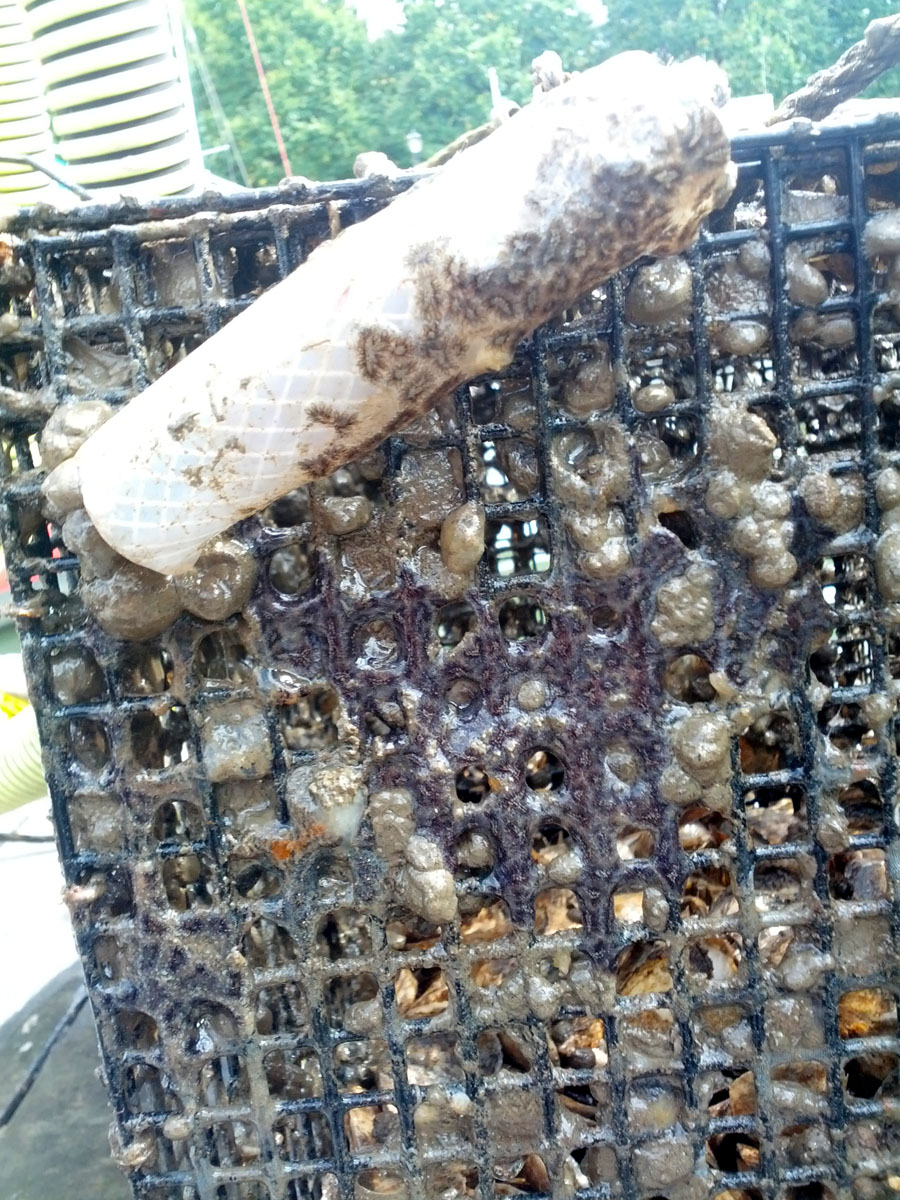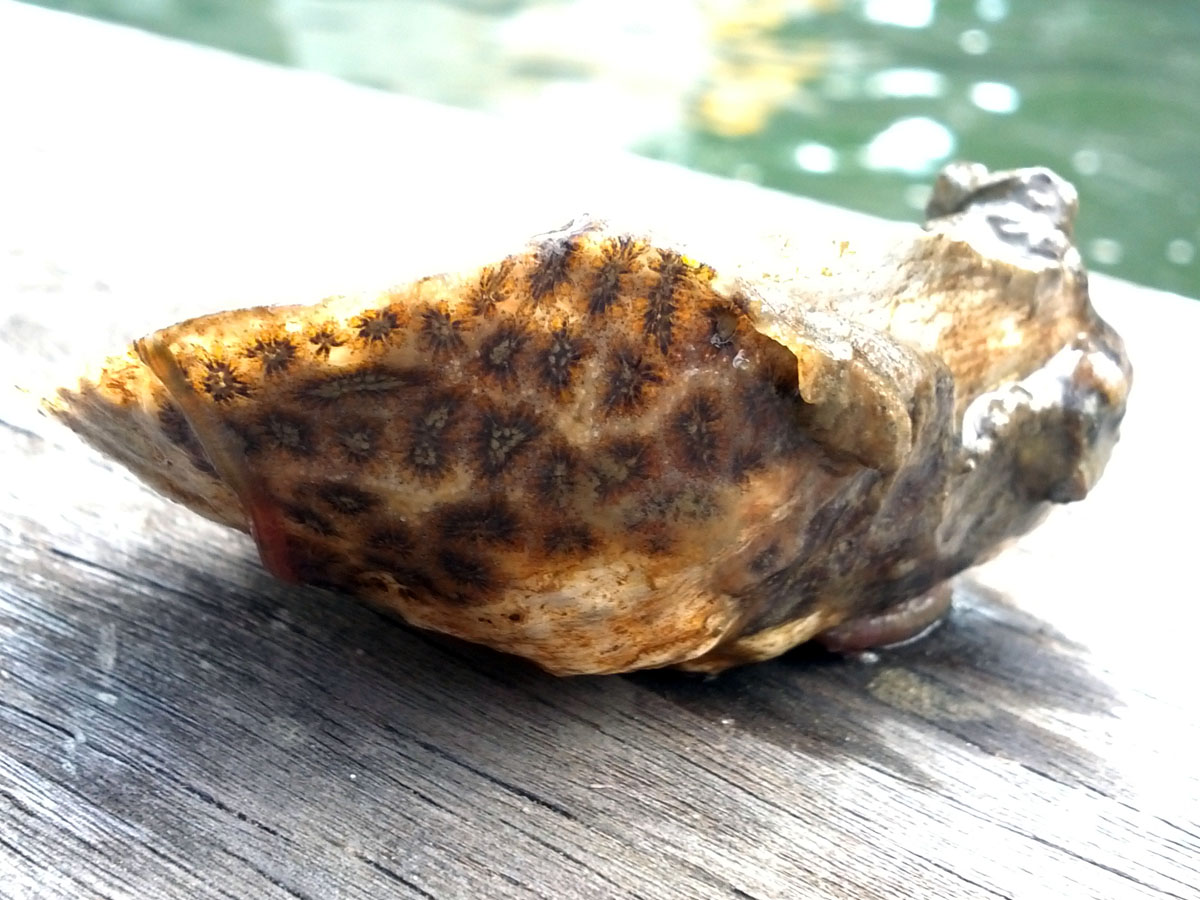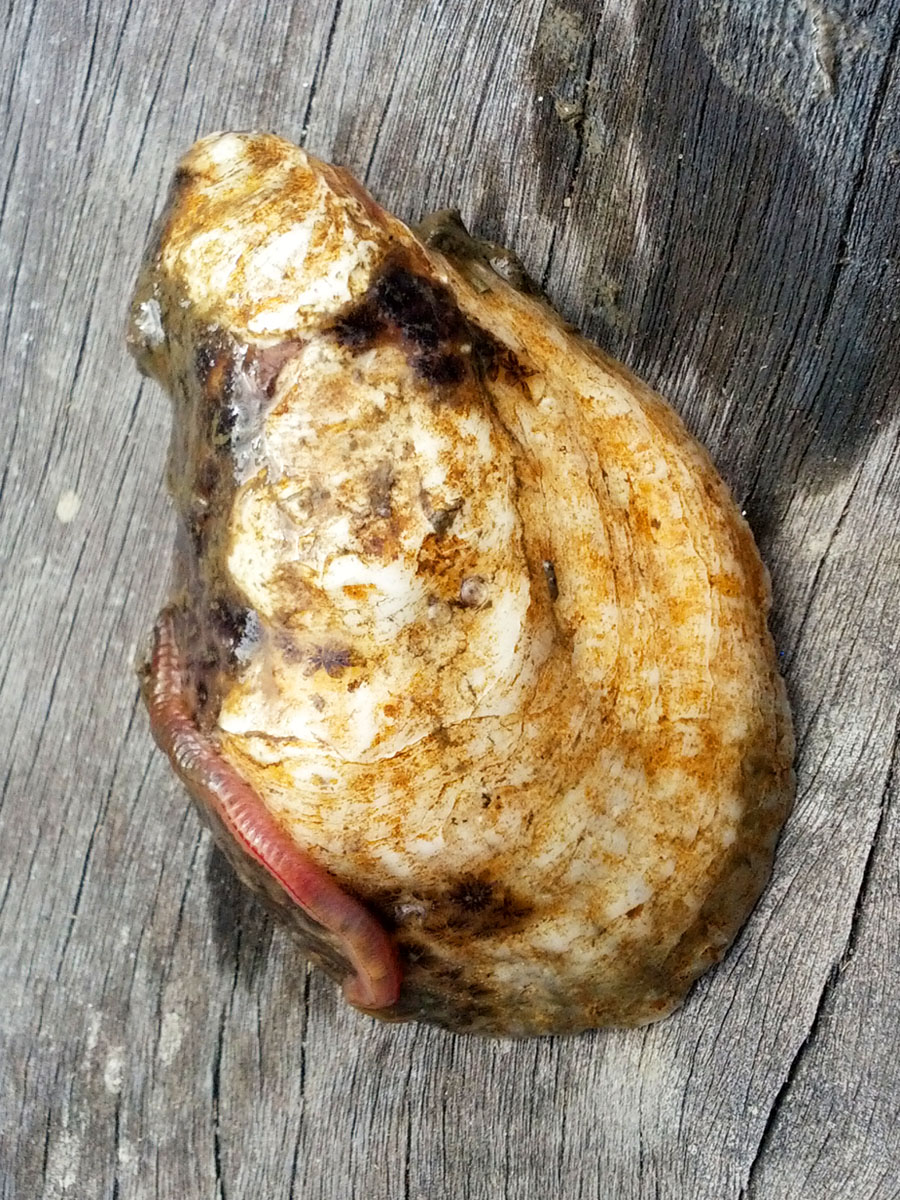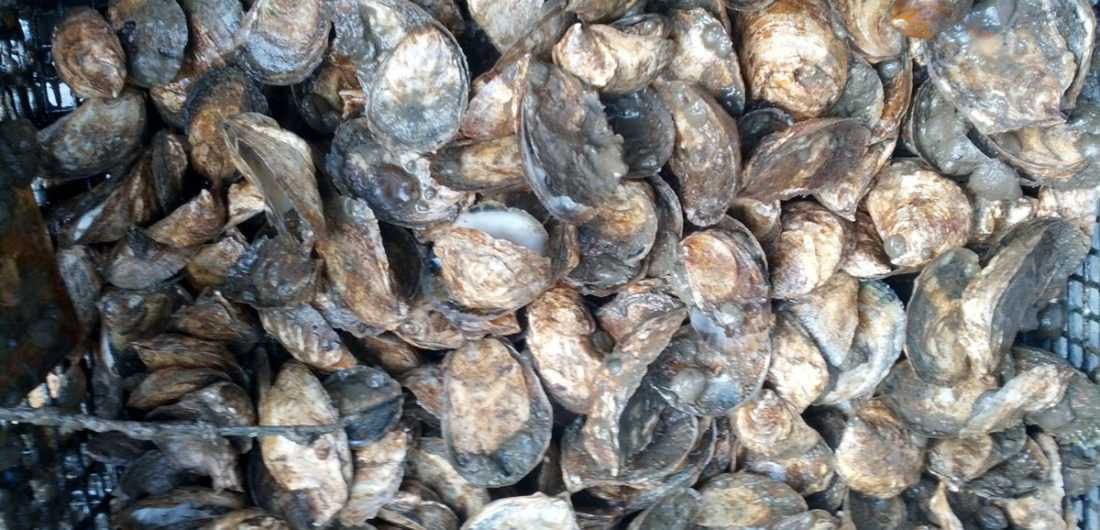A month after the Attack of the Sea Squirts, I returned to my oyster garden and crossed my fingers that there would not be as many squirting tunicates bulging from my cage. Although some had grown back, there were definitely fewer this time, in part due to the colder weather. I breathed a sigh of relief and began yanking off the stragglers from the cage. That’s when I noticed these ominous black patches on the cage and ropes.

Was it some sort of underwater mold or a sponge? An aquatic leopard? An evil spotted slime? Was it toxic or dangerous to touch? I gingerly poked at the black patch and was reassured when my finger didn’t burn off. However, the plant or animal, whatever it was, did not dislodge readily either. Lacking a stiff wire brush, I decided I’d wait till next month to scrape it off the cage.

After scraping sea squirts from exterior of the cage for about an hour, I popped open the cage to inspect the inside. Right away, I noticed quite a few open and empty shells. Drat, I’ve already lost a bunch of oysters! There were more clumps of sea squirts hanging from the cage’s interior, with some stuck to the tops of the oyster shells, but these were relatively easy to pick off. I was more concerned that several oysters had been branded with the mysterious black spotting organism seen on the outside of the cage. If this was some sort of boring sponge, it could be weakening the oyster shells and exposing them to predators.

Suddenly, as I was examining the shell, something moved. The oyster thudded to the ground and I jumped back. A round pink worm was slithering out and around the oyster shell, and seemed like it might even be crawling inside the oyster. Oy, were my oysters being eaten by sea worms as well? I lifted the cage up and several more worms were wriggling on the dock.
I sent some photos to the NY/NJ Baykeepers and they told me that the black spotted organism was actually a star tunicate, another invasive fouling species related to the sea squirts though fairly dissimilar in appearance. Star tunicates grow on a variety of substrates, like ship hulls, pilings, rocks and shellfish, and tend to do quite well in polluted water. They can vary in color from black, violet, green and bright yellow, and most likely were introduced to the East Coast through ballast water. While they’re not exactly dangerous for oysters and shellfish, they do compete for the same resources and can stymie water circulation.
The worms most likely were blood worms or clam worms. These are often used as bait for fishing. They are also not harmful to the oysters, and most likely they were burrowing into and eating oysters which were already dead.
So I guess the good news is that the dead oysters died of unrelated water quality causes, rather than from predation. My respect for oyster farmers has definitely skyrocketed, and I have a much greater appreciation for that perfectly manicured, spotless oyster shell that you see at cocktail bars. Mine look nothing like that! Part of the problem may be that I only tend to my oyster garden once a month, whereas farmers will usually check and flip their oyster bags every week or so. I don’t really have the time to do that, so my oysters will probably end up looking a little more…unique.
Stay tuned for more updates as we approach winter!
Previously:
Oyster Garden Tales: Invasion of the Sea Squirts
Oyster Garden Tales: What Are These Little Squirts?!
How Does Your Oyster Garden Grow?
